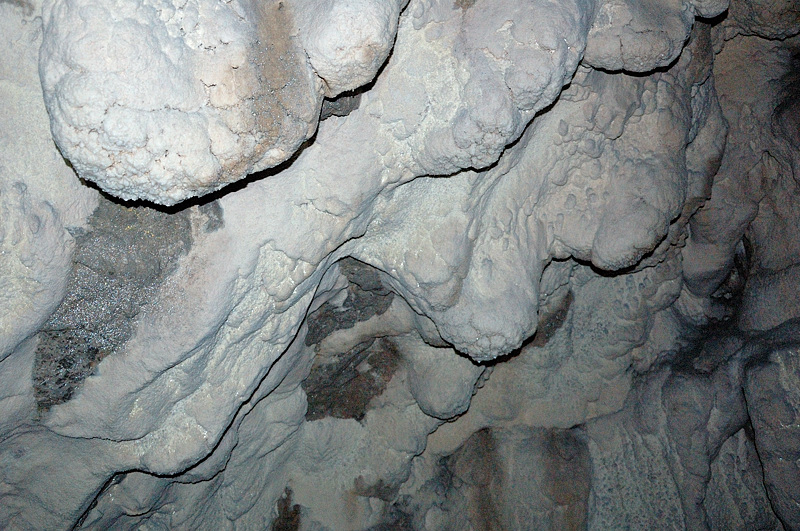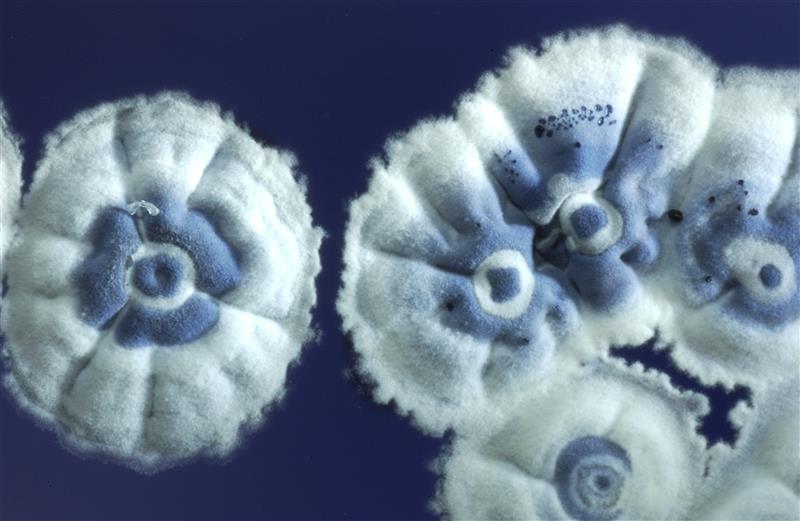Featured Image courtesy Doronenko and Wikimedia Commons
Paper: High-Throughput Sequencing Analysis of the Actinobacterial Spatial Diversity in Moonmilk Deposits.
Authors: Marta Maciejewska , Magdalena Całusińska, Luc Cornet, Delphine Adam, Igor S. Pessi, Sandrine Malchair, Philippe Delfosse, Denis Baurain, Hazel A. Barton, Monique Carnol and Sébastien Rigali
Do you ever think about the microbes around you when you go caving? Me neither, but a team of scientists from Belgium did.
Actinobacteria are found in many places around the world, including volcanic terrains and ice caves. They are of particular importance to cave ecosystems and structure since the formation of speleothems (cave formations) like moon milk is thought to be aided by Actinobacteria. These microbes are known for their ability to produce filaments and aid calcium carbonate deposition and precipitation, which could be important for the mineral deposition that forms speleothems.

Despite the importance of microbes in caves, our understanding of microbial communities and spatial distribution within a cave is still fairly limited, i.e. we still don’t know which microbes dominate cave formations and where they live. An international team of scientists set out to answer these questions using three speleothems in the Grotte des Collemboles (English: Springtails’ Cave) in Belgium. Using sterile scalpels, the team scraped soft moonmilk deposits from the walls of the cave into tubes to understand whether different speleothems in the same cave have different bacterial communities.
Using high-throughput DNA sequencing, they found that all the moonmilk deposits had over 700 species in common but distinct communities of bacteria. At least 10% of the species on a particular speleothem were unique to it, and they identified over 4,000 species in total. Actinobacteria was the second-most abundant group (after Proteobacteria) across deposits and many Actinobacterial groups like Nocardia, Pseudonocardia and Streptomyces were found at every speleothem.
Within Actinobacteria, the genus Streptomyces showed the highest diversity (19 species) across all sites even though they only comprised 3% of the actinobacterial community. Interestingly, the team could only grow 5 of these Streptomyces in the lab, which reinforces the significant obstacles to culturing microorganisms still faced by microbiologists.

Streptomyces are already a prodigious source of antibiotics and other biologically important compounds, but could these speleothem communities be a source of novel antibiotic compounds? The answer might be worth exploring, given the diversity of Streptomyces found in just this one cave but also the emerging roles of other Actinobacteria in antibiotic production.
The difficulty of growing in situ the bacteria we find in cave formations might complicate our ability to study the compounds they produce, but such adventures could still offer fascinating insights into the microbial inhabitants of caves and how they help bind mineral formations together. The next time you go caving, hopefully you’ll think about the Actinobacteria that surround you!

Hunting for Antibiotics in Caves by Janani Hariharan is licensed under a Creative Commons Attribution-ShareAlike 4.0 International License.
